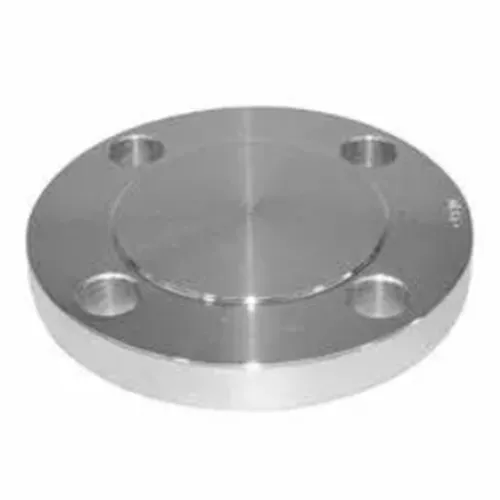-
Cangzhou Yulong Steel Co., Ltd.
-
Phone:
+86 13303177267 -
Email:
admin@ylsteelfittings.com
- English
- Arabic
- Italian
- Spanish
- Portuguese
- German
- kazakh
- Persian
- Greek
- French
- Russian
- Polish
- Thai
- Indonesian
- Vietnamese
- Zulu
- Korean
- Uzbek
- Hindi
- Serbian
- Malay
- Ukrainian
- Gujarati
- Haitian Creole
- hausa
- hawaiian
- Hebrew
- Miao
- Hungarian
- Icelandic
- igbo
- irish
- Japanese
- Javanese
- Kannada
- Khmer
- Rwandese
- Afrikaans
- Albanian
- Amharic
- Armenian
- Azerbaijani
- Basque
- Belarusian
- Bengali
- Bosnian
- Bulgarian
- Catalan
- Cebuano
- China
- China (Taiwan)
- Corsican
- Croatian
- Czech
- Danish
- Esperanto
- Estonian
- Finnish
- Frisian
- Galician
- Georgian
- Kurdish
- Kyrgyz
- Lao
- Latin
- Latvian
- Lithuanian
- Luxembourgish
- Macedonian
- Malgashi
- Malayalam
- Maltese
- Maori
- Marathi
- Mongolian
- Myanmar
- Nepali
- Norwegian
- Norwegian
- Occitan
- Pashto
- Dutch
- Punjabi
- Romanian
- Samoan
- Scottish Gaelic
- Sesotho
- Shona
- Sindhi
- Sinhala
- Slovak
- Slovenian
- Somali
- Sundanese
- Swahili
- Swedish
- Tagalog
- Tajik
- Tamil
- Tatar
- Telugu
- Turkish
- Turkmen
- Urdu
- Uighur
- Welsh
- Bantu
- Yiddish
- Yoruba

Nov . 21, 2024 01:53 Back to list
concentric reducer pipe
Understanding Concentric Reducer Pipes A Comprehensive Overview
In the realm of fluid dynamics and piping systems, specific components play a pivotal role in ensuring efficiency and functionality. One such component is the concentric reducer pipe. This article aims to explore the fundamentals of concentric reducers, their applications, advantages, and considerations for use.
What is a Concentric Reducer Pipe?
A concentric reducer is a type of pipe fitting that is used to connect two different sizes of piping. Unlike eccentric reducers, which offset the pipe diameters, concentric reducers maintain a central alignment. This design facilitates a smooth transition from a larger diameter pipe to a smaller one while maintaining the same axis, which is crucial for many applications in fluid transportation systems.
Concentric reducers are typically manufactured from a variety of materials, including but not limited to, stainless steel, carbon steel, and PVC. The choice of material depends largely on the application's specific requirements such as temperature, pressure, and the type of fluid being transported.
Applications of Concentric Reducers
Concentric reducer pipes are widely used across various industries. Some of the common applications include
1. Oil and Gas Industry In this sector, concentric reducers facilitate the flow of crude oil, natural gas, and other hydrocarbons through pipelines, making them essential components in pumping stations and distribution networks.
2. Water Treatment Plants In water treatment facilities, concentric reducers help manage the flow rates and pressure changes, ensuring that water is transported efficiently without causing turbulence or pressure-induced damage.
3. HVAC Systems Heating, ventilation, and air conditioning (HVAC) systems utilize concentric reducers to optimize airflow through ducts, allowing for better temperature regulation and improved energy efficiency.
4. Chemical Processing In chemical manufacturing, where various substances are transported through pipelines, concentric reducers ensure a gradual transition between varying pipe sizes, minimizing the risk of leaks and maintaining system integrity.
Advantages of Using Concentric Reducers
The use of concentric reducers comes with several benefits
concentric reducer pipe

1. Smooth Flow Transition The design of concentric reducers allows for a smooth transition of fluids, thereby reducing turbulence, which can lead to increased energy efficiency and reduced wear and tear on piping systems.
2. Central Alignment Since concentric reducers maintain a central alignment, they help in minimizing the risk of misalignment that could lead to leaks or system failures.
3. Versatility Available in various sizes and materials, concentric reducers can be customized to meet the specific needs of different applications, ensuring compatibility with existing piping systems.
4. Reduced Pressure Loss The streamlined design of concentric reducers contributes to reduced pressure loss as the fluid passes through, which is crucial for maintaining efficient flow rates in piping systems.
Considerations When Using Concentric Reducers
While concentric reducers provide several advantages, there are also some considerations to keep in mind
1. Pressure Rating It is essential to ascertain that the concentric reducer’s pressure rating matches or exceeds the system’s operational requirements to prevent failures.
2. Material Compatibility Choosing the right material is critical, especially in applications involving corrosive substances. Compatibility ensures longevity and reliability of the piping system.
3. Installation Proper installation is key to maximizing the performance of concentric reducers. Misalignment or improper fittings can lead to leaks and adversely affect system performance.
4. Maintenance Regular inspection and maintenance of piping systems can help identify any potential issues early, ensuring that the concentric reducers operate efficiently over their lifespan.
Conclusion
Concentric reducer pipes are essential components in various industrial applications, aiding in the seamless transition between different pipe sizes while promoting efficient fluid flow. Their advantages, such as improved energy efficiency and reduced turbulence, make them a popular choice in many sectors. However, careful material selection, installation, and maintenance are vital to harnessing their full potential. Understanding the principles and utilities of concentric reducers is fundamental for professionals working in engineering, piping design, and fluid dynamics, driving the efficiency of modern piping systems toward sustainable operations.
Latest news
-
ANSI 150P SS304 SO FLANGE
NewsFeb.14,2025
-
ASTM A333GR6 STEEL PIPE
NewsJan.20,2025
-
ANSI B16.5 WELDING NECK FLANGE
NewsJan.15,2026
-
ANSI B16.5 SLIP-ON FLANGE
NewsApr.19,2024
-
SABS 1123 FLANGE
NewsJan.15,2025
-
DIN86044 PLATE FLANGE
NewsApr.19,2024
-
DIN2527 BLIND FLANGE
NewsApr.12,2024
-
JIS B2311 Butt-Welding Fittings LR/SR 45°/90° /180°Seamless/Weld
NewsApr.23,2024











